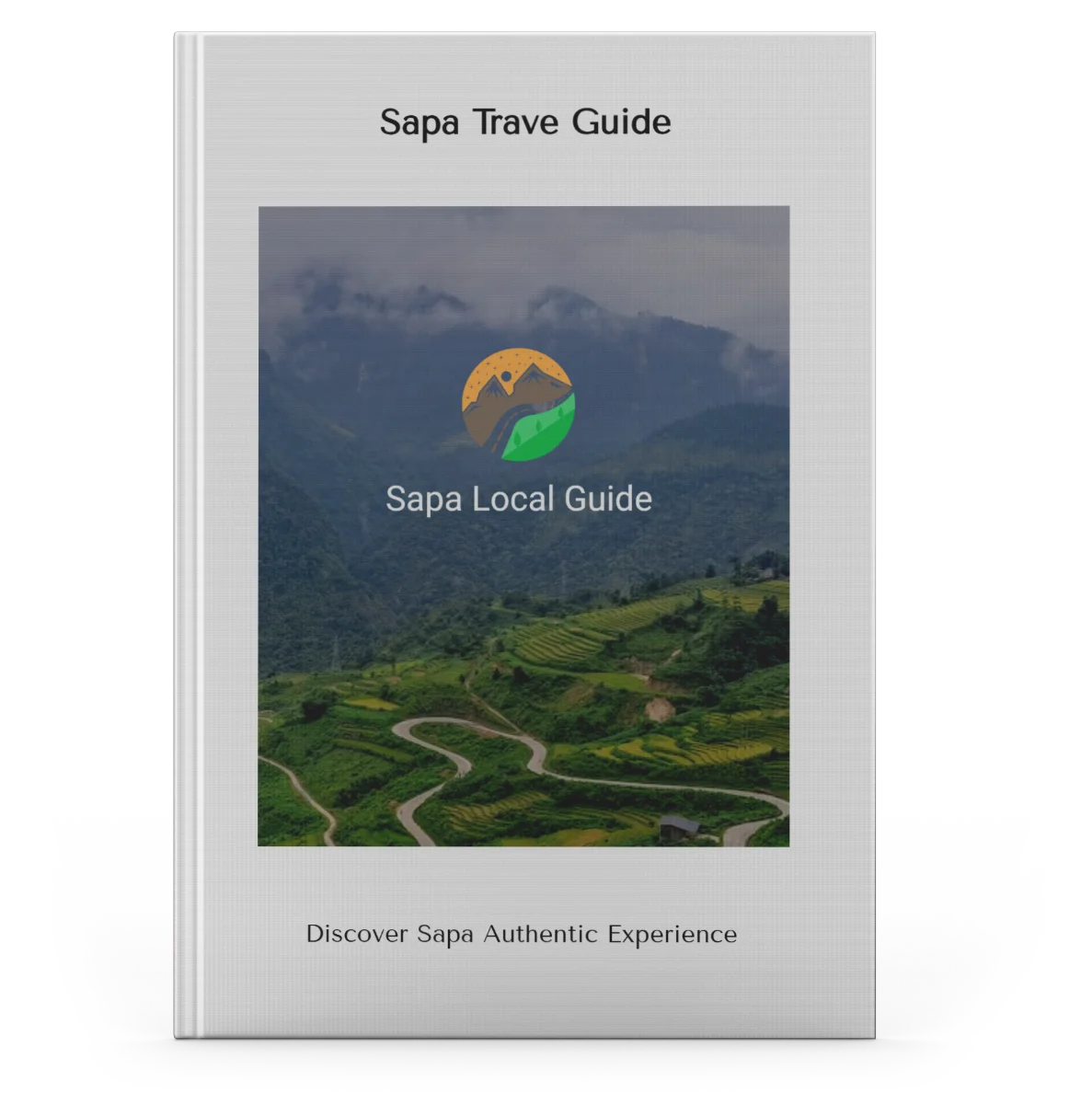![]()
Authentic Experience of Sapa
Mu Cang Chai, Sapa a stunning district in Vietnam, features terraced fields, vibrant Hmong local culture, breathtaking landscapes, attracting many visitors
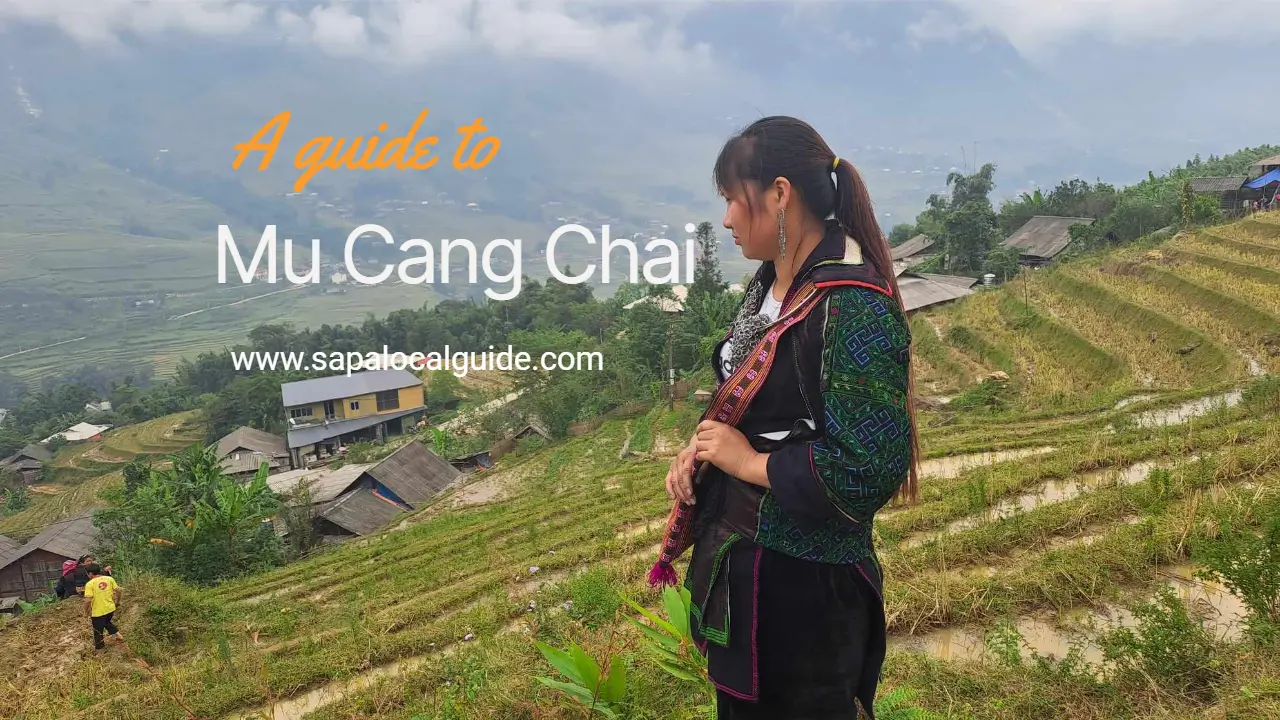
In recent years, around late September and early October, people from all over the country come to Mù Cang Chải to enjoy the amazing beauty of this highland area. Here, visitors can admire the terraced fields and the white clouds floating over Cao Phạ Pass. They can also take part in the unique cultural festivals of the Hmong people.
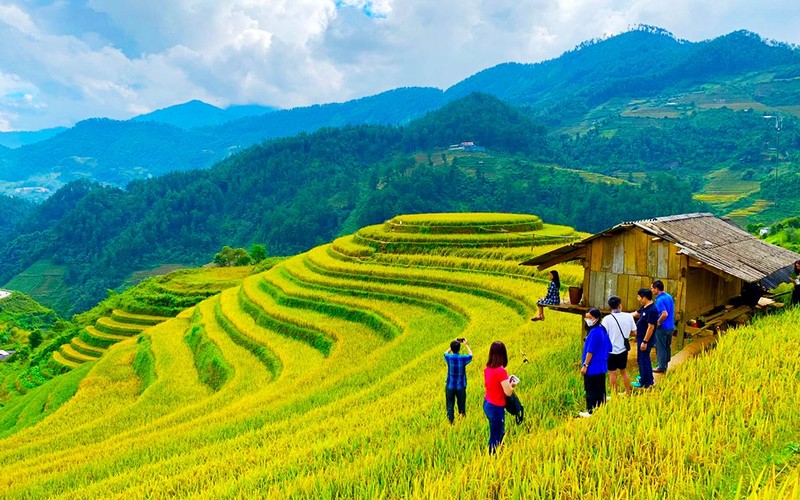
Mù Cang Chải is a mountainous district in the western part of Yên Bái province, about 180km from Yên Bái city and over 300km northwest of Hanoi. This area lies at the foot of the Hoàng Liên Sơn mountain range, more than 2,000m above sea level. Visitors can reach Mù Cang Chải by following National Highway 32, choosing between two routes. The first route is from Hanoi to Yên Bái, then traveling 70km to Mường Lò. You can spend the night there and start early in the morning. The drive from Mường Lò to Mù Cang Chải takes around half a day, covering nearly 100km, with more than 80km of steep mountain roads. Once you reach an elevation of 1,750m, with fog and clouds, you'll know you're close to the town of Mù Cang Chải. Along the way, there is a flat area where you can stop and enjoy the famous sticky rice dish called “cơm lam nếp.”
The second route takes you along the Nội Bài – Lào Cai expressway, passing through Sa Pa, over Ô Quy Hồ pass, and through the districts of Tân Uyên and Than Uyên in Lai Châu province before arriving in Mù Cang Chải.
When you visit Mù Cang Chải, even just once, you'll feel the richness of nature, the unique culture, and the warmth of the people. The road to Mù Cang Chải is far and challenging, but full of excitement. The scenery keeps changing. One moment you’re looking at the large Mường Lò field filled with Thai stilt houses and white flowers, and the next, you're on winding, steep roads. Geological movements have formed tall mountains like Púng Luông (2,985m), Phu Ba (2,512m), and Mồ Dề (2,100m).
Crossing Khau Phạ Pass (2,100m), the highest in the “Four Great Peaks” of the Northwest, you’ll be surrounded by clouds and cool weather all year round. This pass is also the fourth-best place in the world for paragliding. It's perfect for thrill-seekers who want to fly and enjoy the stunning sky views. From one mountain pass to the next, the changing heights make the journey even more interesting. On both sides of the road, you'll see breathtaking terraced rice fields, leaving you in awe of the natural beauty.
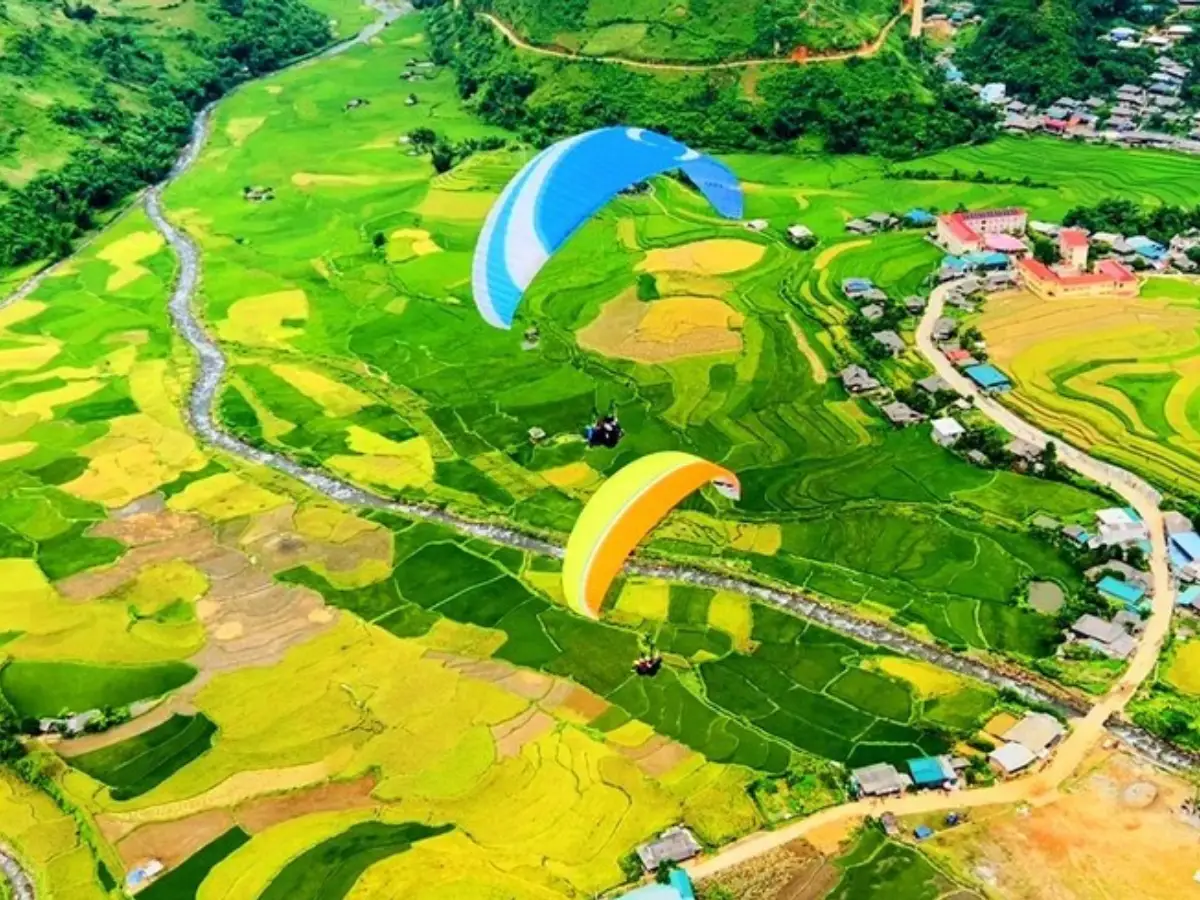
Mù Cang Chải is a charming small town nestled between two mountain slopes. The peaceful villages are found either in the green valleys or on the Khau Pha Pass. The Mong people make up 90% of the population here, divided into four groups: White Mong, Black Mong, Flower Mong, and Red Mong. They live on high mountain slopes, ranging from 800 to 1,700 meters above sea level, and maintain unique cultural traditions that attract many researchers. Visitors can explore Hmong villages, learning about their culture and traditions in this part of Northwest Vietnam, known for its rich folk art and famous local products. Travelers can watch Mong dances, join traditional festivals, and experience crafts like blacksmithing, weaving flax, making jewelry, and tasting traditional Mong dishes.
A special spot to visit is Thai village. From the town center, just cross a bridge, turn left, and after 1 km, you'll arrive at this quiet village in the valley, with mountains behind it. Here, visitors can enjoy Thai specialties, relax in traditional herbal baths, stay in stilt houses, and take part in cultural activities like bonfires and Thai dances.
In Mù Cang Chải, you’ll also see the breathtaking beauty of the National Heritage terraced fields, spread over 330 hectares in the three communes of Che Cu Nha, La Pan Tan, and De Xu Phinh. These terraces, shaped like the fingers of the sky, are stunning works of art created by the skilled hands of the Mong people.
For a long time, Mù Cang Chải, which means “dry tree village” in Hmong local language, has symbolized the hard work and creativity of the people. What was once barren land has been transformed into beautiful terraced fields by the Mong, who skillfully turned every piece of soil into productive land. These terraces not only provide food for the community but also add beauty to the landscape, reflecting both the traditional culture and the incredible creativity of the Mong people. Throughout all 13 communes and towns of Mù Cang Chải, you'll find these amazing terraced fields hugging the hillsides.
Sapa 1 Day

1 day experience,Rice fields, valley, villages. Moderate to challenging, Private,Vegan-friendlyCultural immersion & active adventure
Motorbike Tour

1 day experience,Rice fields,waterfall.Challenging,Private tours friendly Cultural immersion, active adventure
Sapa 2 Days

2 days 1 night experience. Moderate to challenging, adventure. Mountains, valleys, rice fields and villages. Vegan-friendly
Sapa 3 Days

3 days 2 night experienc, Moderate to challenging. Mountains, valley, rice fields & villages. Private tours. Vegan-friendly
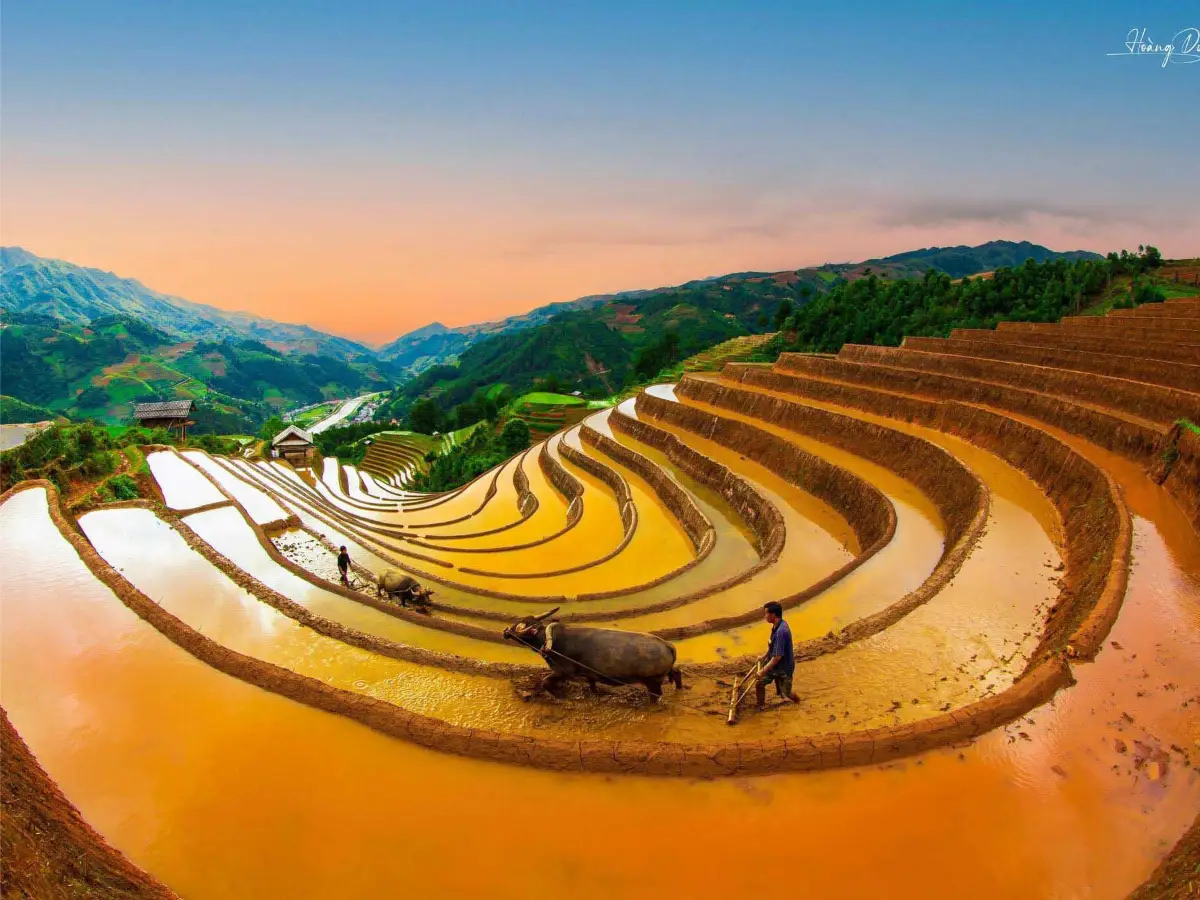
The best time to see the terraced fields in Mù Cang Chải is from May to June, when the fields are filled with water, and from September to October, when the rice turns golden. Visitors come during these times to see the stunning green and golden rice paddies covering the hills. In the villages of La Pán Tẩn, Chế Cu Nha, and Dế Su Phình, tourists can see layers of terraced fields spreading across the hills. The beauty of these fields, crafted by local farmers, looks like a giant woven picture in nature, with green mountains, blue skies, and simple, happy lives.
You can take photos along the 7km road passing through the town. However, to fully experience the beauty of the terraced fields and the landscape, hiking for several hours or even days along mountain trails is the best way. Recently, Mù Cang Chải was named one of the most beautiful mountain regions in the world by Insider, an American travel website. It is listed alongside famous places like Rainbow Mountain in Peru, the Andes in Bolivia, and Mount Fuji in Japan.
Mù Cang Chải has a mild climate, with an average temperature of 19°C. Summers are cool, and winters can be cold. Known as the “land of mist, high mountains, and deep valleys,” Mù Cang Chải is crossed by many streams, the largest of which is the Nậm Kim. This stream flows year-round, dividing the area and giving it a unique, peaceful beauty. There are also smaller streams like Nậm Hu, Nậm Mu, and Nậm Có, which help keep the climate cool and fresh. Along with these streams are several waterfalls, such as Nậm Mơ and Dề Thàng, where visitors can enjoy the clear, rushing water.
Pú Nhu Waterfall, located 10 km west of La Pán Tẩn, has water cascading down from high forest streams in Lai Châu province. It drops about 20 meters and has several tiers. Mơ Waterfall is between two hills and has seven scenic stops for visitors. It takes about 30 minutes of walking to reach the first level, with beautiful swirling water. To see the more impressive four-tier waterfall, visitors must hike further upstream. Besides waterfalls, tourists can explore Nậm Khắt's caves, climb the peaks in Púng Luông, and visit the ancient stone field in Lao Chải.
Mù Cang Chải's forests are vast, covering about 80,000 hectares. Among them, 20,293 hectares are old-growth and primary forests, with another 12,863 hectares of pine forests. The area is rich in natural resources like sơn tra (a kind of apple) and valuable medicinal plants, which have started providing income for locals. There is also a nature reserve in Chế Tạo village, with nearby areas home to diverse wildlife, including 127 bird species and 53 mammal species. Among the rarest are the hornbill Aceros Nipalensis, which can be found here and in Pù Mát National Park. Only about 28–30 individuals remain, making it the largest hornbill group in Vietnam. Other animals include monkeys, deer, bears, leopards, and the rare black gibbons.
In Mù Cang Chải, visitors can immerse themselves in white clouds that cover the mountains and discover the beauty of the terraced fields and the local culture. With its breathtaking scenery, Mù Cang Chải is an unforgettable experience for nature lovers and a favorite destination for photographers and tourists worldwide.
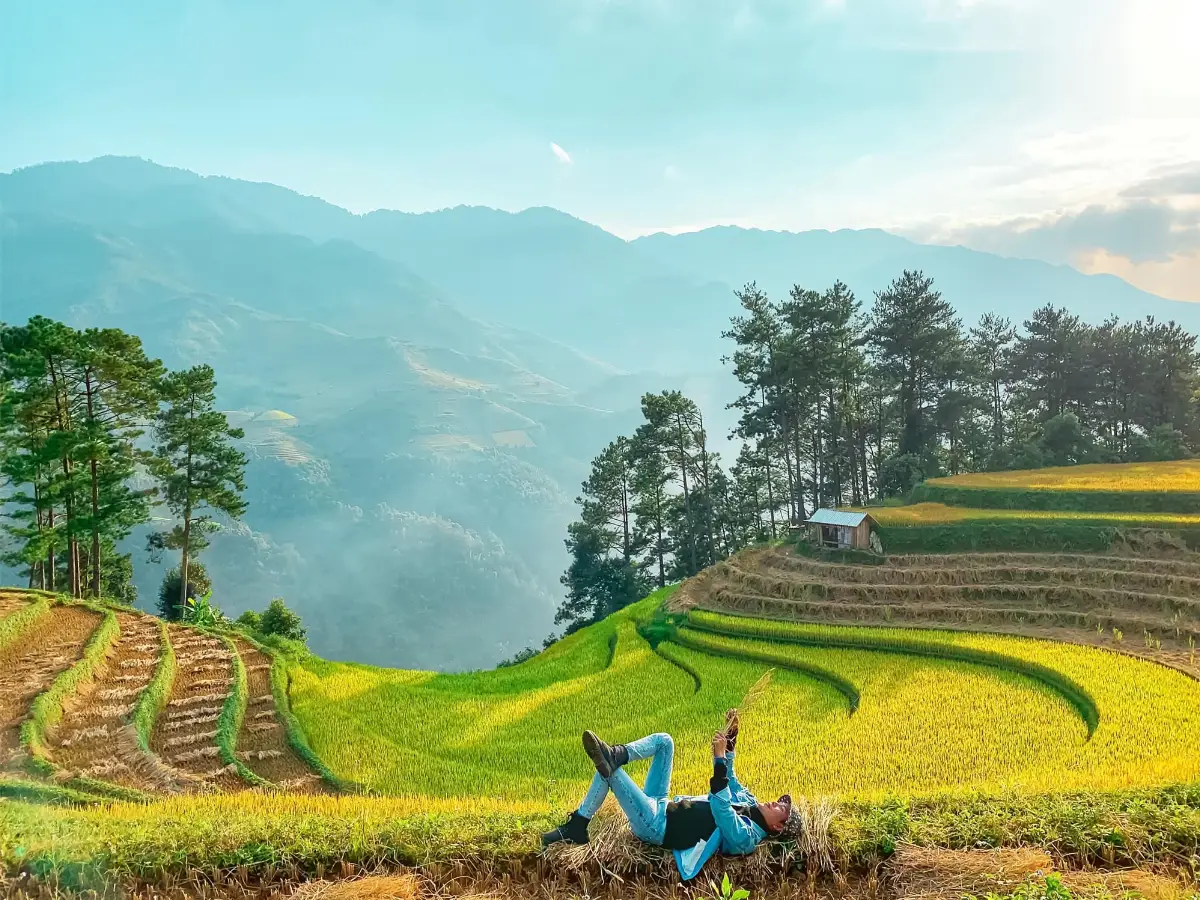
Sapa 1 Day

1 day experience,Rice fields, valley, villages. Moderate to challenging, Private,Vegan-friendlyCultural immersion & active adventure
Motorbike Tour

1 day experience,Rice fields,waterfall.Challenging,Private tours friendly Cultural immersion, active adventure
Sapa 2 Days

2 days 1 night experience. Moderate to challenging, adventure. Mountains, valleys, rice fields and villages. Vegan-friendly
Sapa 3 Days

3 days 2 night experienc, Moderate to challenging. Mountains, valley, rice fields & villages. Private tours. Vegan-friendly
Complete with itinerary, destinations, food, accommodation and tips!
